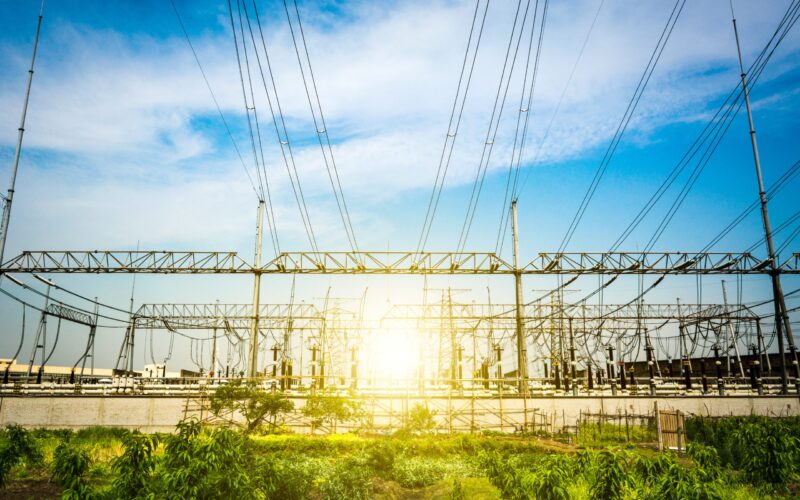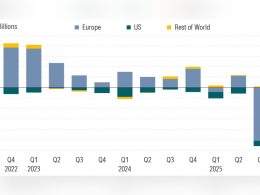Following a sharp decline in wind and solar stocks after Donald Trump’s election victory, asset managers are focusing on a segment of the green transition they believe will withstand the president-elect’s anti-ESG agenda: power grids.
Analysts at TD Securities identified grid infrastructure and related equipment as one of the most promising sub-sectors in the energy transition, with investments in the space already yielding gains. Since the November 5 election, a stock-market index tracking grid equipment has risen by approximately 6%, even as the broader S&P Global Clean Energy Index fell by 10%.
US and international companies tied to grid development have rallied. Japan’s Hitachi Ltd. saw its shares climb more than 6%, while US-based firms like Eaton Corp., Rockwell Automation Inc., Ametek Inc., and Emerson Electric Co. gained over 6% to 7%. These companies are benefiting from expectations of soaring US energy demand and protectionist policies encouraging domestic manufacturing.
“US power demand is set to increase significantly, and long-term carbon-free energy will play a crucial role,” said Ran Zhou, portfolio manager at Electron Capital Partners.
Companies linked to electrical grid infrastructure were already outperforming other segments of the green sector prior to the US election, with the NASDAQ OMX Clean Edge Smart Grid Infrastructure Index posting a 20% gain last year. Now, asset managers suggest that a US manufacturing expansion, spurred by Trump’s tariff policies, could drive a new wave of growth for grid-related stocks.
President-elect Donald Trump’s commitment to rescind unspent funds from the 2022 Inflation Reduction Act and his pro-fossil fuel agenda have sparked concerns among green investors about potential setbacks for renewable energy projects. However, Trump’s pledge to provide US companies with cheap electricity underscores a need for expanded renewable energy infrastructure, according to analysts.
These policy shifts coincide with a significant rise in US energy demand. Wood Mackenzie, a consultancy, projects the country will experience its largest energy consumption surge in decades, with growth rates potentially reaching 15% in some regions over the next five years.
A significant portion of the anticipated energy demand surge is driven by technology companies expanding data centres to support advancements in artificial intelligence. Industry leaders such as Amazon.com Inc., Alphabet Inc.’s Google, and Microsoft Corp. have recently announced nuclear energy agreements to ensure their operations are powered by carbon-free energy sources.
Morgan Stanley analysts highlighted that current projections for the renewables market “don’t yet factor in the coming step change higher in renewables demand from the data-center market,” in a note issued following the US election.
During President Joe Biden’s administration, power grid development received over $30 billion in federal support. Furthermore, in May, US regulators implemented comprehensive sector reforms, marking the most significant changes in over a decade, to accelerate grid construction efforts.
The global transition to net zero will require an estimated $215 trillion over the next three decades, as outlined in BloombergNEF’s New Energy Outlook 2024. This monumental investment will encompass areas such as energy supply, expansion of power generation capacity, grid infrastructure, and the hydrogen supply chain. On the demand side, it will drive the adoption of electric vehicles and the installation of heat pumps in buildings.
Jerry Goh, an investment director at Abrdn Plc, predicts significant benefits for equipment manufacturers worldwide over the next two to three years, driven by grid upgrades. “Production in the US isn’t enough, and the equipment backlog has increased further, so that’s quite an immense story,” he explained.
Currently, the Nasdaq grid index trades at 20.3 times forward earnings—a level high compared to a global stock benchmark but near its 10-year average. Bloomberg data suggests an expected 11% rise in earnings per share over the next year.
Yi Shi, client portfolio manager at Pictet Asset Management, confirmed that the firm’s Clean Energy Transition fund had already invested in companies supporting the US grid prior to the election and intends to maintain those positions.
“We aren’t focusing solely on headline valuations; we are examining underlying earnings growth,” Shi stated.





















